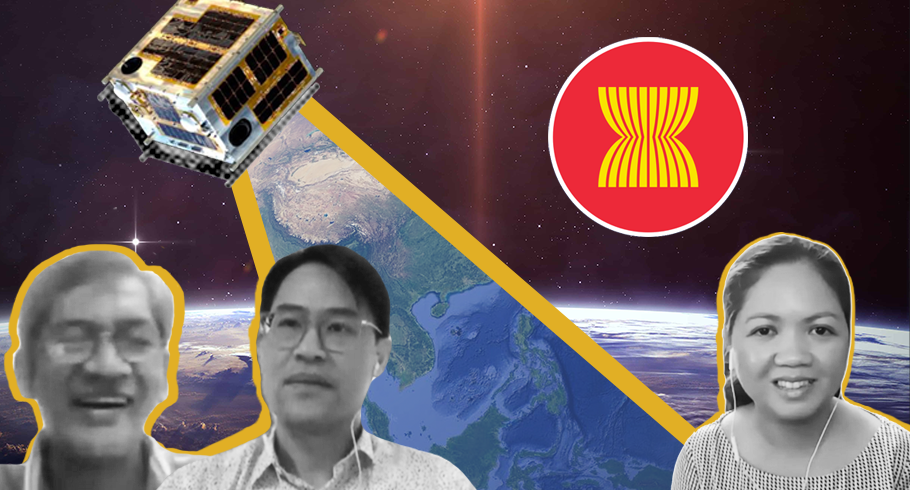Philippine Space Agency (PhilSA) Deputy Director General Gay P. Perez, Ph.D., represented the Philippines in a panel discussion about the space ecosystem in Southeast Asia during the first installment of the Space in Southeast Asia (SpiSEA) webinar of the Space Generation Advisory Council (SGAC) held on 26 June 2021.
Dr. Perez was joined by Chris Leck, Deputy Executive Director of the Office for Space Technology and Industry in Singapore, and Dr. Noordin Ahmad, Principal Consultant of the IntecX Creation and Former Director General of the National Space Agency of Malaysia.
Space activities for the development of the Philippines
“It is a very exciting time to be part of the space sector,” Dr. Perez emphasizes as the Philippines continues to strengthen its local space ecosystem. PhilSA is currently leveraging previous and existing space-related activities to build momentum for future projects. The development of previous satellites under the PHL-Microsat and STAMINA4Space programs serves as PhilSA’s foundation.
Dr. Perez explained the value of space-related activities on policies and decision-making that affect day-to-day lives. Upstream activities such as satellite development generates technical know-how for human resource development. This also ensures that the country would have a steady pool of space scientists to sustain the space industry.
Downstream efforts complement the upstream through the provision of satellite data that could be used by government agencies to formulate more efficient transportation systems, reliable communication, and sustainable agriculture, to name a few. Data has a direct connection to concerned sectors as the missions developed are meant to respond to the needs of society; Satellite data could play a crucial role in socio-economic development when utilized for science-based decision-making and policy-planning.
The growing space sector in Southeast Asia
Supportive policies, emerging space actors, and more affordable technologies have been accelerating the growth of the space sector in Southeast Asia, Dr. Ahmad explains. “There are so many actors already working with developed nations who are far ahead in this area. Government decisions are also supporting this involvement, especially the universities and the industry.” The expansion and increasing inclusivity in the space industry likewise allows for participation of more academic institutions in the development of meaningful small satellite missions, making these institutions key contributors in the local space industry.
In the Philippines, Dr. Perez highlighted that the academe has been crucial in capacity-building as universities continue to demonstrate capabilities and overcome challenges in building satellites.
Mr. Leck also notes that some countries in Southeast Asia that were formerly end users of satellite data have now been shifting to the role of satellite developers leading to more research and development (R&D) activities in the upstream sector. “The space sector in the region is rapidly growing and what’s interesting is in the past we were end users of space technologies whether we’re talking about remote sensing communications, but right now we are starting to shift to being developers of technology as we’re seeing more R&D taking place in our universities and industry.”
The future of space activities in Southeast Asia is definitely on an upward trajectory. An increase in appreciation of science-based solutions vital to our daily lives will be needed to sustain this.
The full webinar may be viewed here.




